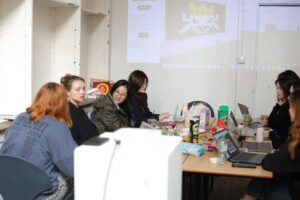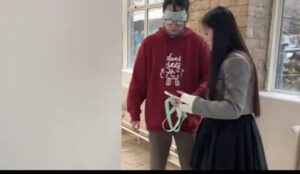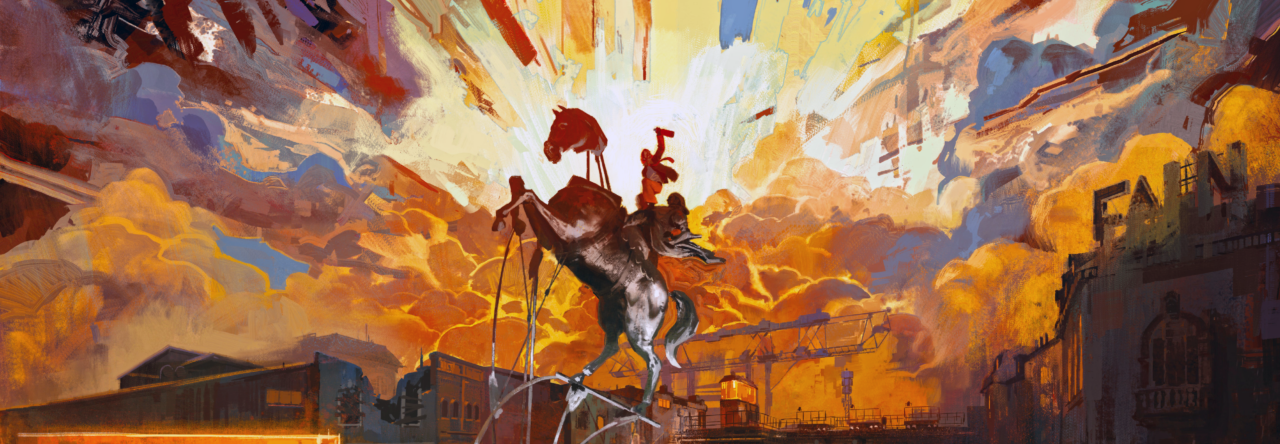About Knowledge
This week’s theme focused on the design of public programmes. I felt it was quite similar to the workshops we conducted last semester. However, this time, I gained a deeper understanding of why the course places such a strong emphasis on public projects.
Compared to simply completing a pre-set exhibition, public programmes make curatorial practices truly “fluid” — they are not merely a one-way transmission of meaning from curators or artists to the public, but rather an interaction that constantly evolves, responds, and reshapes itself through the process.
As Gul Durukan and Kadriye Tezcan Akmehmet pointed out, many contemporary art institutions today are attempting to “open archives” in public dialogues, enabling cultural materials to be continuously reinterpreted and revitalised (Durukan & Akmehmet, 2021). I believe this process-oriented rather than results-oriented curatorial logic can also be extended to the understanding of public programmes.
While most exhibitions themselves are temporal and cannot be permanent, the influence of public projects may last much longer — not through the exhibition objects themselves, but through the experiences and reflections that transform participants, curators, and artists during the process.
This reminds me of Hal Foster’s idea: to transform “the no-place of the archive” into “the no-place of a utopia” (Foster, 2004, p.22). Curating, perhaps, is about continuously constructing this kind of open, unfinished space.
About Collective
The collective activities this week were particularly fruitful for me, as I led a small workshop teaching everyone how to use Artsteps to build virtual exhibitions.
In my session, I not only introduced the basic operations of Artsteps but also shared practical problems I encountered and the tips I had accumulated, such as how to overcome upload size limits, how to optimise the loading speed using low-poly models, and how to design exhibition flows through Guide Points.
I particularly emphasised a core idea: virtual spaces are not mere replicas of physical spaces, but can and should be re-planned based on experiential needs.
For example, I explained to the group that even though Artsteps provides a default 30×30 metre cube, we could freely scale it up or down depending on the narrative logic. We could even intentionally exaggerate spatial proportions to evoke certain emotional responses.
My group members actively joined the discussion, raising intriguing questions such as whether multisensory experiences could be simulated within Artsteps or whether interactive triggers could be embedded.
This kind of collective exploration made me realise that even a technically demanding platform can spark creative ideas if the environment for communication is open enough.
As Simon Sheikh mentioned in his idea of “curating as educational space,” curating is not merely the presentation of existing knowledge but a site for knowledge production itself (Sheikh, 2006). I feel that this workshop truly embodied that spirit.

Artsteps performing
Apart from the Artsteps workshop, I also participated in another curatorial project organised by Yiran Gu, Hanyun Xue, Lingqiu Xiao, and Yufan Wang — the Fear as Method workshop.
The event was fascinating, using the deprivation of vision to stimulate participants’ imagination. Personally, I did not experience fear because I am quite accustomed to visualising with my eyes closed.
More interestingly, instead of recording experiences through writing afterward, we were invited to draw what we perceived. This non-textual method was refreshing.
If the future version of this workshop could allocate more time for participants to observe and analyse each other’s drawings — even conduct light psychological discussions — it could break social barriers and deepen mutual understanding.
Perhaps whether through technical tools building virtual spaces, or through sensory deprivation creating temporary psychological spaces, curating is essentially about constructing new platforms for interaction, challenging and expanding habitual cognitive boundaries.
Each different form of collaboration deepens my understanding of curating as a multi-dimensional, evolving practice.

Fear as a method
About My Project
My individual curatorial project is largely complete at this stage, but this week brought an unexpected and frustrating setback.
Previously, I had selected a rental apartment (unfurnished) as the blueprint for my exhibition space and built a 3D model of it in Artsteps based on its floor plan. However, this week I discovered that the Zoopla listing had been taken down — and I had not saved any of the reference data.
This means that from both a practical operation perspective and a historical documentation perspective, I can no longer continue using the previous design. I am now forced to start over and search for a new location.
Although it was a huge disappointment, on a positive note, the repeated practice of virtual modelling on Artsteps had already helped me develop a more mature awareness of space zoning, accessibility, and visitor flow.
For example, I paid special attention to designing discrete yet easily accessible staff resting areas, ensuring that toilets could be reached without disrupting the main narrative flow, and creating “decompression zones” where visitors could rest after intense sensory experiences.
Through these considerations, I realised that spatial design itself is a form of storytelling — every choice of movement path, every opening and partition, is a silent narrative that guides how the audience “enters” and “exits” the story.
No matter what space I choose next, this detailed spatial consciousness will undoubtedly help me make more resilient and flexible curatorial decisions in the future.
—–
References
• Durukan, S. Nesli Gül, and Kadriye Tezcan Akmehmet. 2021. “Uses of the archive in exhibition practices of contemporary art institutions.” Archives and Records 42 (2): 131–148.
• Foster, Hal. 2004. “An Archival Impulse.” October 110: 3–22.
• Sheikh, Simon. 2006. “On the Standard of Exhibiting as a Standard of Living.” In Curating and the Educational Turn, edited by Paul O’Neill and Mick Wilson.
(Fear as a method)



alewisj
The format of your blog is somewhat confusing. Your first post seems to combine the first three weeks’ worth of blog entries, on which I have already provided feedback. The only other entries you have posted are your peer review, which will receive feedback during the final evaluation, and the 10-point project breakdown that I asked the group to include as an additional blog post. Because of this, it is difficult for me to offer any constructive criticism, as there are no additional blog posts for me to comment on.
As I have already provided feedback on your speculative project, I won’t go into too much detail to avoid confusion. However, I want to reiterate the information received from JL regarding the need to include contemporary artists in your project. I think this can be done easily with the suggestions JL and I provided. Additionally, I believe you can integrate this into your current proposal seamlessly.
It’s important to consider the budget for your current project: Can it be completed for under £10,000? It seems that you have made significant changes to the venue, and if you adapt your idea to incorporate these changes, I believe you can stay within budget. Additionally, think about the timeline and schedule for the project. I will share a link to Jl’s helpful slide presentation, which outlines various factors you need to take into account and provides useful information about blog posts.
You are an excellent contributor in class and clearly understand the curatorial concepts introduced to you. Additionally, you have demonstrated yourself to be a generous and thoughtful peer to your group. It would be a shame if this were not reflected in your blog, as it represents a missed opportunity to incorporate valuable feedback before the final submission.
To enhance future blog posts, refer to JL’s slides presented this week, as they break down some of the subheadings.-
https://www.learn.ed.ac.uk/ultra/courses/_117082_1/outline/file/_11117495_1
In particular, you might find this slide useful when editing your blogs
For every Blog Post: ask yourself how can I connect this with the 11 weeks of lectures and learning, the themes, and the course resources?
• A reminder to look at the reading list on Learn for extra resources.
• You must include your independent research and course materials.
• Exhibition research, and the curatorial texts from named exhibitions, are a
key part of this material.
• Caption images and list resources with full bibliographic/reference details.
Date, medium, materials, location, source etc. Do this consistently.